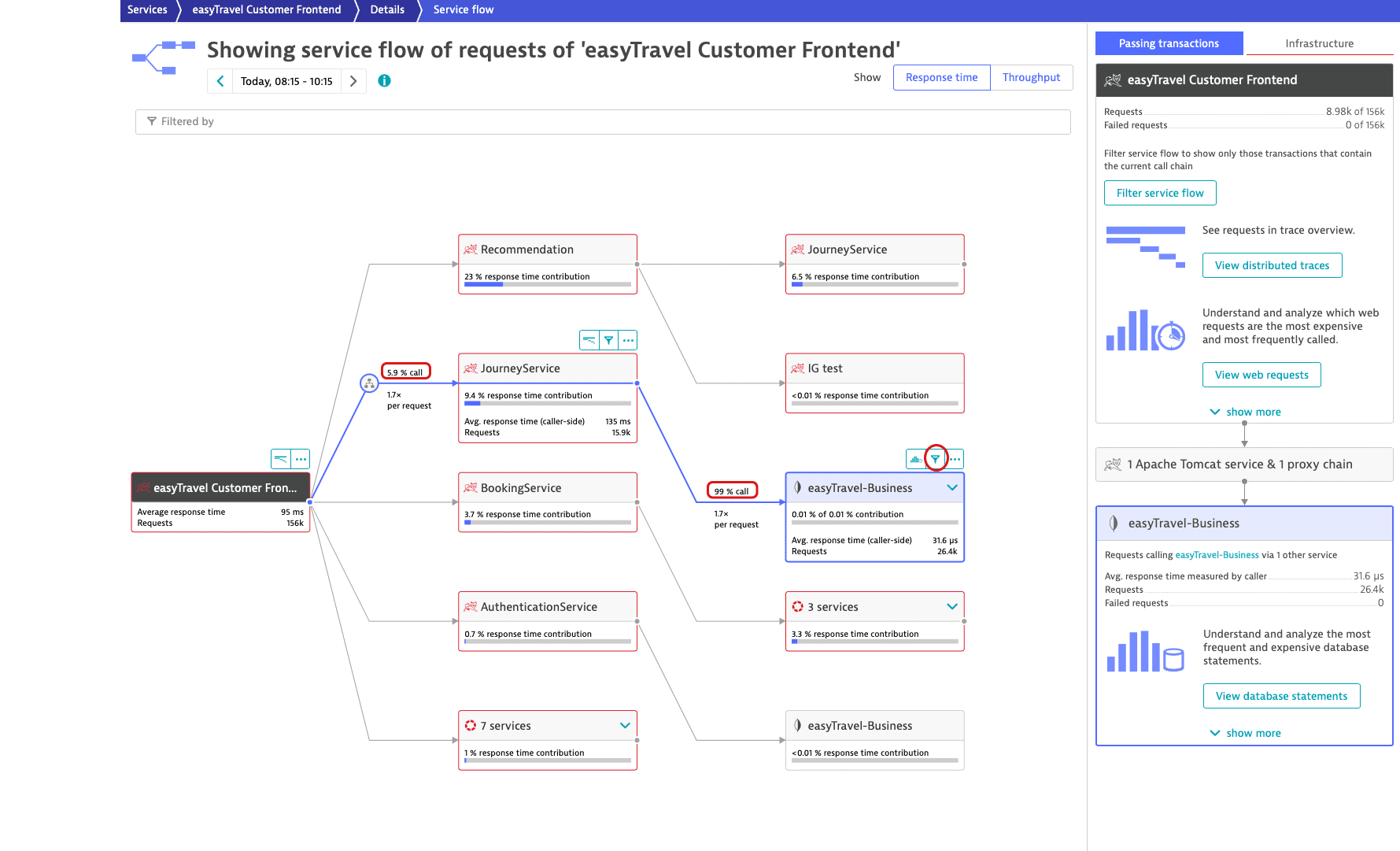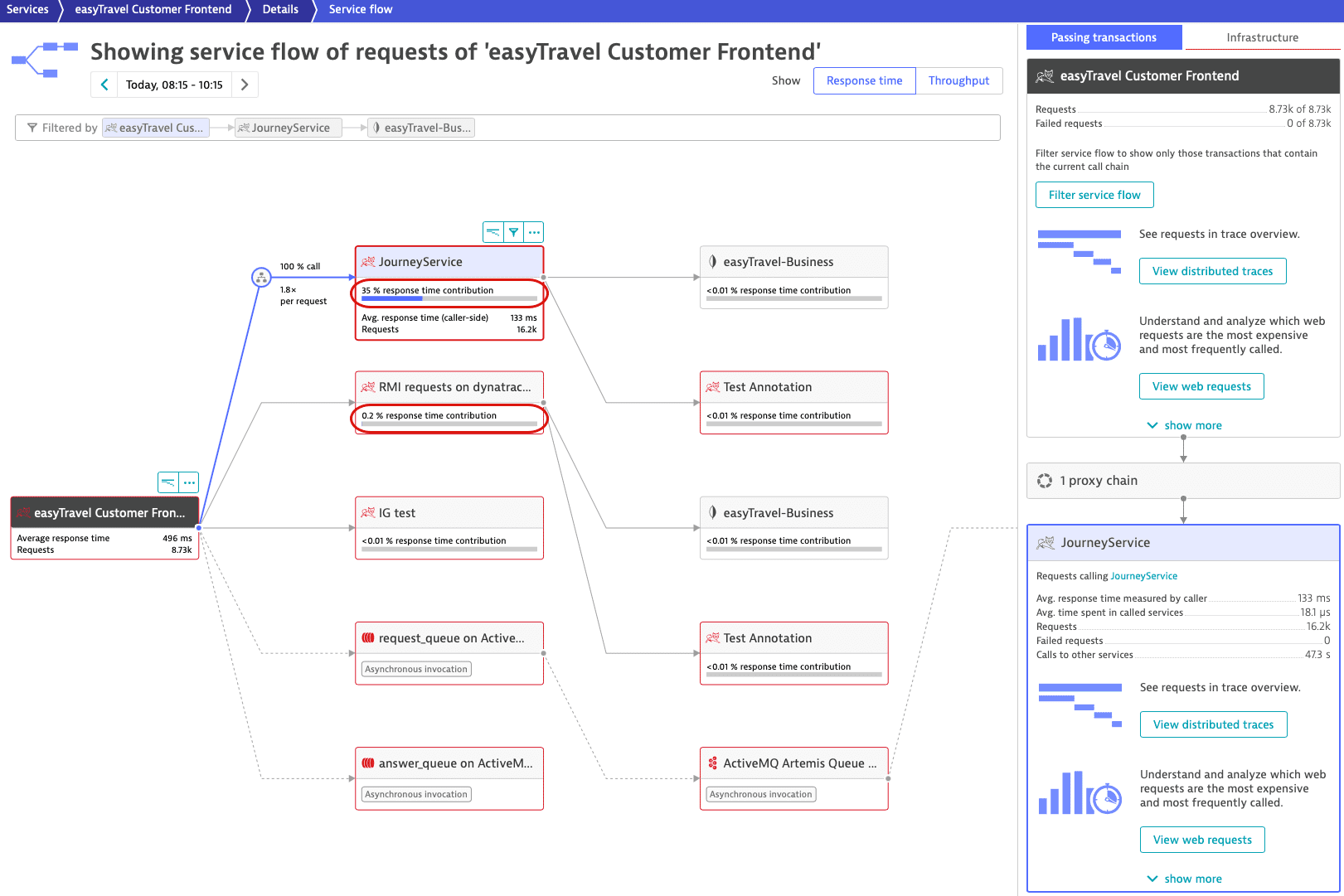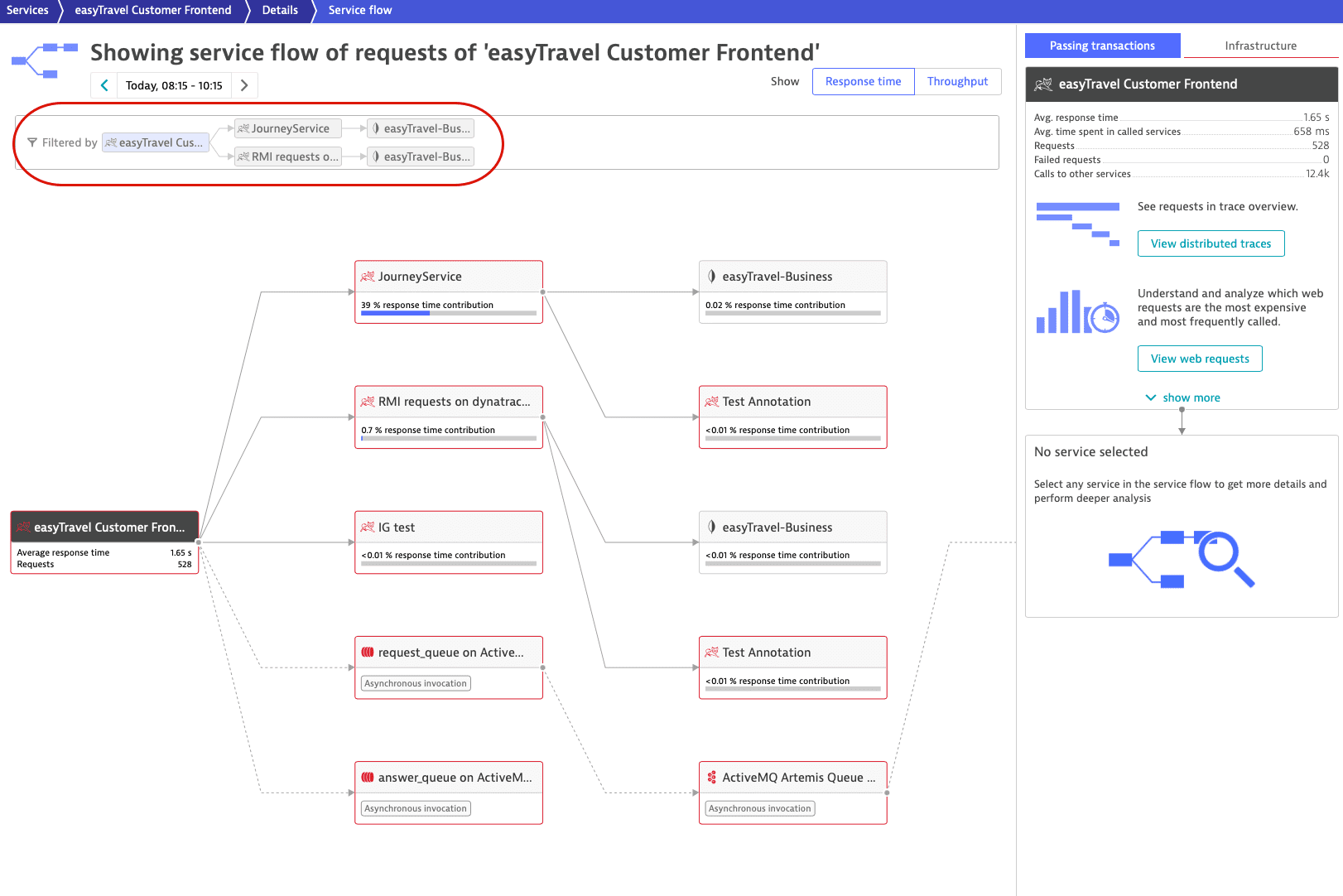Service flow filtering
- Latest Dynatrace
- 5-min read
- Published Jul 19, 2017
Modern web applications typically feature complex service architectures that can process millions of different types of requests. With each unique request behaving slightly differently and triggering a slightly varied service flow, it can be a real challenge to analyze the performance and behavior of individual requests.
The filtering features help you to navigate the complexity of your application's service architecture—enabling you to find the proverbial needle in the haystack. Dynatrace Service flow enables you to analyze subsets of requests triggered by a given service.
The general Service flow filtration procedure looks like this:
- Go to Services (previous Dynatrace) or
Services Classic.
- Select the service you want to analyze.
- On the service overview page, under Understand dependencies, select View service flow.
- Within Service flow, select a called service to define the sequence of services you want to analyze.
The pane on the right directly opens to the Passing transactions tab. - To create a filter for the selected service sequence, do one of the following:
- Select Filter service flow in the top tile.
- Select Filter
above the selected service.
- Add more criteria to the filter:
- In the filter, select the service where you want to apply additional filtration.
- From the Filtered by list, select the criterion.
- Specify the threshold or matching rules for the criterion.
- Select Apply.
- If needed, add more criteria to the filter.
- When finished, select Apply.
See below for a more detailed explanation.
Filter requests based on specific call sequences
Call sequence filters are available in most service analysis views, but they’re most obvious in the Service flow. As you can see in the example below, only 5.9% of the requests to the easyTravel Customer Frontend service also called the JourneyService service. Next, 99% of them called the easyTravel-Business database service.

To focus Service Flow on these calls
- Go to Services (previous Dynatrace) or
Services Classic.
- Select the service you want to analyze.
- On the service overview page, under Understand dependencies, select View service flow.
- Within Service flow, select a called service to define the sequence of services you want to analyze. In our example, it's
easyTravel-Business.
The Passing transactions tab appears on the right side of the page. - To create a filter for the selected service sequence, do one of the following:
- Select Filter service flow in the top tile.
- Select Filter
above the selected service.
Let's go back to our example. A filter has been created to focus analysis only on those requests from the easyTravel Customer Frontend service that call the JourneyService service and subsequently call the easyTravel-Business database.
Notice that the number of requests analyzed on easyTravel Customer Frontend has been reduced to 8.73k from 156k, as only a subset of calls is now taken into account. Consequently, the average response time now represents only those easyTravel Customer Frontend requests that call JourneyService.
Now take a close look at the JourneyService node. Note that 35% of the easyTravel Customer Frontend service's response time is taken up by JourneyService. Service flow also reveals something unexpected—some of the selected requests trigger the RMI server.

Multi-faceted filters
Each filter can contain multiple call sequences. This means that you can create complex, multi-faceted call-sequence filters based on your unique service-analysis needs. Service Flow will only focus on calls that fit all the criteria.
To add the new sequences to the existing filter
- While your current filter is still active, select an additional call sequence in Service flow.
- In the Passing transactions tab of the pane on the right, select Filter service flow.
In the example below, the filter criteria are extended with calls from the easyTravel Customer Frontend service that call the RMI server service and subsequently call the easyTravel-Business database. Now the number of requests analyzed on easyTravel Customer Frontend has been reduced to 528. Also, the JourneyService service is now responsible for 39% of the response time.

Extend your filters with additional criteria
After you've narrowed down the number of calls based on the involved services, you can add more criteria to the filter.
-
In the filter, select the service where you want to apply additional filtering.
-
From the Filtered by list, select the criterion.
-
Specify the threshold or matching rules for the criterion.

-
Select Apply.
-
If needed, add more criteria to the filter.
-
When finished, select Apply.
In our example, we applied the Response time threshold of 200 ms to JourneyService. Now only calls with a response time longer than 200 ms are shown, and there are just 6 of them. We're now very close to finding the needle in this haystack!

Analyze call sequences from multiple angles
The true power of call-sequence filtering becomes apparent when you begin analysis of a problematic call sequence. In the example above, Service flow now shows us that 40% of the easyTravel Customer Frontend service's response time is taken up by JourneyService.
The next logical step is to analyze the response time of the JourneyService service in the context of the selected call sequence. To do this, select JourneyService within Service flow. The right pane reveals all the analysis options that you can perform on the selected service—all within the context of the filtered call sequence. All the filters you created in Service flow will also be applied to the additional analysis.
Learn more about additional analysis options in topics listed below.
- Distributed traces
Analyze the detailed method-level chain of calls. - Analyze backtrace
Explore the sequence of service calls that led up to the specific service request. - View response time
View how the response time is distributed along different functions of the service (for example, database usage and code execution) - Analyze outliers
View the response time distribution of requests to the service within a specific timeframe.